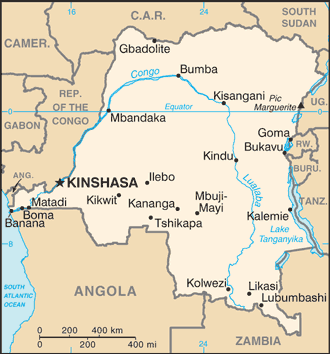The Democratic Republic of Congo (DRC) is one of the largest geographically and mineral-rich countries on the entire continent. Nonetheless, it remains one of the most unstable countries from a political and economic point of view, especially due to the prolonged conflicts that have broken out since the 1990s. Although slight economic growth is expected in the coming years based fundamentally on the export of minerals such as copper and cobalt, the country's weaknesses remain strong. The DRC is among the five poorest nations in the world. In 2024, approximately 74.6% of the population of the Democratic Republic of Congo lives on less than $2.15 a day (World Population Review).
The medium-term outlook for the DRC is favorable with growth of 6.4% in 2023. The mining sector is expected to expand further in 2022 and accelerate by 2024 as the Kamoa-Kakula copper mine enters its second phase of production. However, the DRC's economy remains vulnerable to commodity price movements and the growth performance of its major trading partners.
The Democratic Republic of Congo (DRC) ranks 164th out of 177 countries in the 2023 Human Capital Index, with a score of 0.37, lower than the Sub-Saharan Africa average of 0.4. This figure reflects the effects of decades of conflicts and fragility, negatively influencing the country's development, with a value lower than the average for Sub-Saharan Africa (World Bank).


